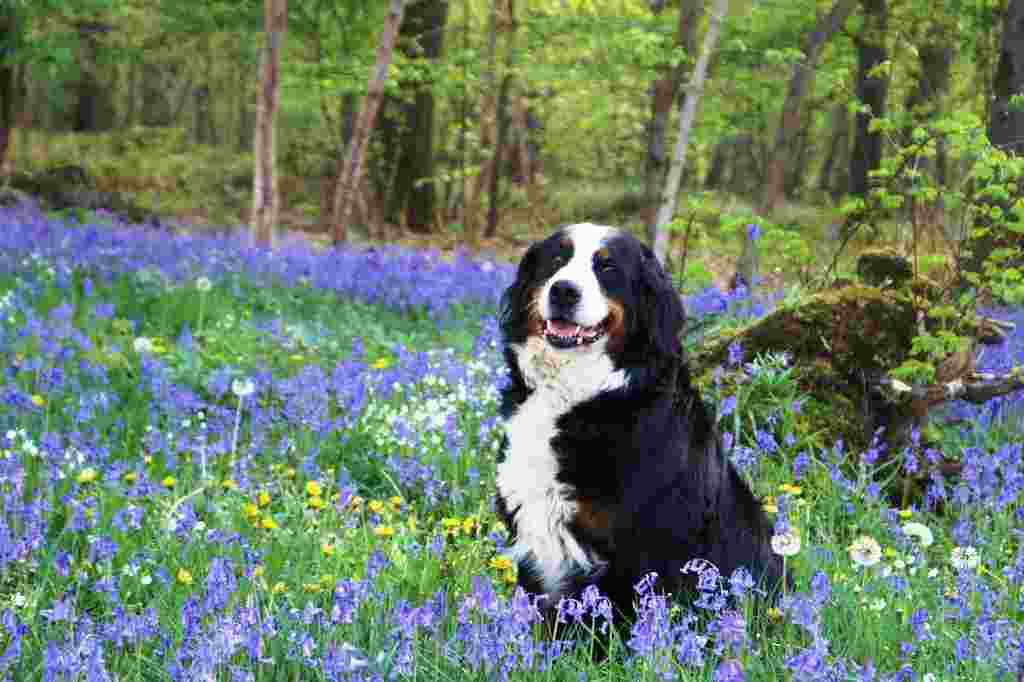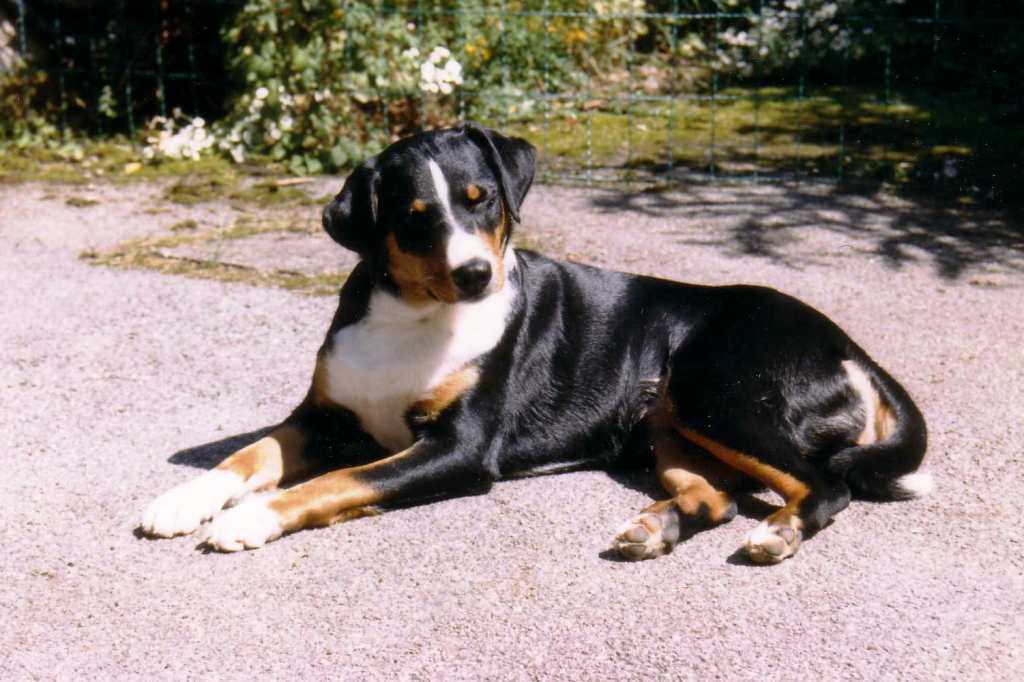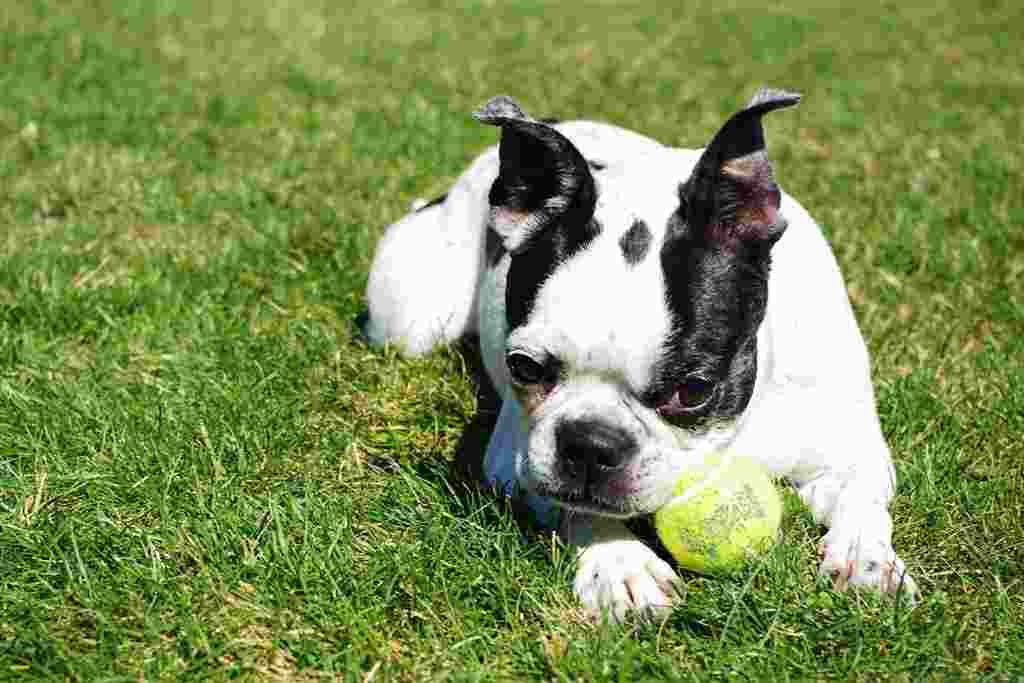The origins of the Bernese mountain dog breed are lost in the mists of time. It is said in fact that they come from the molossi brought by the Roman army who used them as guard dogs and transport dogs. This last hypothesis seems to be confirmed by the finding of ancient Roman vases in which is drawn a dog very similar to the Bernese mountain dog. Other sources instead think this breed is a distant ancestor of the Saint Bernard.
This breed is particularly linked to the small town of Dürrbach and its inn, a meeting point for inhabitants, travelers and merchants: it was here that these dogs of 3 colors were kept. At the beginning, the breed was called “Dürrbächler” and they were bred as farm dogs near Bern, where they were responsible for guarding the flocks, driving carts and moving herds.
The breeding for the purity of the breed began in 19o7 by breeders in the Burgdorf region and already in 1910 in a dog show the farmers of the region were able to present 107 specimens. From that moment on, the breed was called “Bernese Mountain Dog”.
During the First World War, breeding was halted, but soon after the breed was exported. First in the Netherlands and then in America. In 1936, two British breeders began to import Bernese dogs, resulting in the first Bernese Shepherd puppies in England.
Bernese Shepherd Dog Breed Character
You only have to look at the muzzle of this Bernese Shepherd to realize that he is a calm and affectionate dog, loving cuddles, to receive and to do. His affable and calm nature, as well as the ease with which he can be trained, have also made him a great pet.
It can be called a breed with a triple attitude, since, it has taken on the role of guard dog, defense dog and companion dog. It lets itself be scrambled by children with whom it plays tirelessly, and is very protective of them so much so that it is called “babysitter dog”. Even with the smallest children it is very sweet and is absolutely not dangerous.
The Bernese mountain dog is a dog that always needs human contact and a familiar environment. Otherwise, it can develop destructive behavior and undesirable behavior.
It is not a dog suitable for living in an apartment, unless it is very spacious, but it needs to do activities every day for quite some time. The ideal is a house in the countryside with a garden where he can spend a few hours, but he also loves very much to be in a family and has a great predisposition for all members and is affectionate with everyone. He has a deep bond with his “pack leader” to whom he devotes affection and attention.
With strangers it is a little wary, but when it has understood who it can trust, it lowers its defensive barriers. It never has aggressive attitudes towards people it doesn’t know but it will be a good watchdog in the moment in which its territory or its family are put in danger or presumed danger.
Like all dogs, however, it is necessary to start training and socialization when it is a puppy. Both to avoid unwanted behaviors and to be in a family with other animals, both dogs and cats, to which it becomes attached as members of its pack.
Appearance of the Bernese Shepherd dog breed
The Bernese Shepherd is a very large breed, the height at the withers of a male ranges from 64 to 70 centimeters with a weight that can reach 55 kilograms, while females are 60 to 63 centimeters high with a weight that can reach 50 kilograms.
Morphologically classified as a wolf-molossus, it has a body that is slightly longer than tall. Very well proportioned, harmonious. Its limbs are straight and vigorous. Its construction is solid and very robust. He has an elegant gait, not clumsy and runs with great agility.
It has a medium, strong and muscular neck with which it is able to pull even heavy loads. The tail must be thick at least up to the hock, carried low at rest and at the height of the dorsal line in movement.
Its skull is wide, well proportioned to the body, the muzzle is strong and a little short, the truffle is black, the eyes are dark and almond-shaped. The ears are triangular in shape, rounded slightly towards the tip, inserted high and of medium size.
Its coat is long, thin, smooth and abundant. The colors as those of all cattle are 3, black, brown and white. The brown is concentrated on the face, chest and limbs, the white on part of the muzzle, chest and feet.
Care and Health of the Bernese Mountain Dog Breed
It is a breed that possesses a rather low longevity and can grow and develop rather classic diseases in dogs, such as dysplasia, but also other problems such as forms of cancer and, especially, degenerative myelopathy and malignant histiocytosis. It has a life expectancy ranging from 7 to 10 years, but some specimens can reach up to 12 years.
The best advice you can give to keep your dog in perfect health is to build a solid relationship of trust with your veterinarian and be guided and advised by him.
The veterinarian, must establish a routine schedule of annual check-ups, vaccinations and booster shots against the most common diseases, both infectious and seasonal.
As for the care of the coat, it must be brushed very often. It tends to lose a lot of hair and not only during the moulting period. In addition, the eyes, ears and oral cavity must be checked, as well as the interdigital areas. It will be enough to keep it clean with a brush and a carder and limit bathing during the moulting period.
As for feeding, the Bernese does not have a tendency to put on weight, but it must take daily exercise and its diet must be balanced and controlled.


